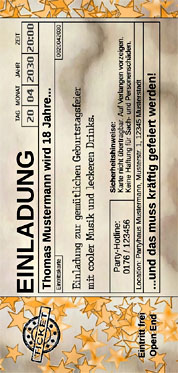Stell dir vor, du hältst das ultimative Tablet in den Händen – das Xiaomi Redmi Pad Pro. Mit einem beeindruckenden Display und innovativer Interkonnektivität hebt es sich von anderen Geräten ab und garantiert dir ein einzigartiges Nutzungserlebnis. Ob beim Streamen deiner Lieblingsinhalte oder beim Arbeiten mit umfangreichen Daten, dieses Top-Modell überzeugt in jedem Test. Lass dich von den verschiedenen Speicheroptionen und der Flexibilität, die es dir bietet, begeistern. Bereit für die besten Features, die nur 2023 für unter 500 Euro verfügbar sind?
Wirst du das Xiaomi Redmi Pad Pro lieben?
Das Xiaomi Redmi Pad Pro aktiviert höchste Erwartungen, wenn es um Leistung und Funktionalität geht. Mit einem beeindruckenden 11 Zoll Display bietet es eine herausragende visuelle Erfahrung, die sowohl bei der Nutzung von Apps als auch beim Streamen von Inhalten glänzt. Die interkonnektivität zu anderen Xiaomi Geräten, einschließlich Smartphones, ist nahtlos und ermöglicht es dir, deine Daten mühelos zu synchronisieren. Ob du nun Spiele spielst oder produktiv arbeitest, der Speicher kann variieren, sodass du genügend Platz für all deine wichtigen Dateien hast. In unseren Tests zeigt das Pad bemerkenswerte Ergebnisse und stellt sicher, dass du die besten Funktionen zum Preis von unter 400 Euro erhältst. Wlan-Verbindungen sind stabil, sodass das Surfen im Netz und Video-Calls reibungslos ablaufen. Das Xiaomi Redmi Pad Pro erweist sich als ein top Tablet, das sowohl in Design als auch in Performance überzeugt und perfekt für jeden digitalen Alltag geeignet ist.
Erlebe Innovation in deiner Hand – Das Xiaomi Redmi Pad Pro: Unübertroffene Leistung für unter 300 Euro!
Design und Display des Xiaomi Redmi Pad Pro
Das Design des Xiaomi Redmi Pad Pro wird dich begeistern, denn es kombiniert Eleganz mit Funktionalität. Mit einem beeindruckenden 11-Zoll-Display, das in lebhaften Farben erstrahlt, wird jedes Bild zum Erlebnis. Die Auflösung von 2.5K sorgt dafür, dass selbst feinste Details klar und deutlich dargestellt werden. Du kannst die besten Inhalte genießen und gleichzeitig den Komfort eines leichten Tablets nutzen, das perfekt für unterwegs ist. Die schmalen Rahmen und das hochwertige Gehäuse verleihen dem Pad eine moderne Ausstrahlung, die sich nahtlos in dein digitales Leben integriert. Ob beim Streaming von Serien oder beim Surfen im Internet – die Interkonnektivität mit deinen anderen Xiaomi-Geräten ist ein weiterer Pluspunkt. Das Wlan sorgt für eine stabile Verbindung, sodass du jederzeit auf deine Daten zugreifen kannst. Wenn du nach einem Tablet suchst, das sowohl in der Leistung als auch im Design überzeugt, könnte das Xiaomi Redmi Pad Pro deine neue Lieblingswahl sein.
Leistung und Performance: Was bietet das Xiaomi Redmi Pad Pro?
Das Xiaomi Redmi Pad Pro hebt sich durch seine beeindruckende Leistung hervor, die selbst die anspruchsvollsten Nutzer begeistert. Mit einem leistungsstarken Prozessor und einem großzügigen Speicher bietet dieses Tablet die besten Voraussetzungen für flüssiges Multitasking und reibungsloses Gaming. Du wirst schnell feststellen, dass die Interkonnektivität mit anderen Geräten nahtlos funktioniert, sodass du dein Konto über verschiedene Plattformen hinweg aktivieren kannst. Das 11 Zoll große Display bringt deine Inhalte in lebendigen Farben zur Geltung, während die WLAN-Funktionalität blitzschnelle Datenübertragungen ermöglicht. In Tests zeigt das Redmi Pad Pro, dass es sowohl für Unterhaltungszwecke als auch für produktives Arbeiten bestens geeignet ist. Mit einem Preis von unter 400 Euro erhältst du ein Top-Tablet, das in seiner Leistung kaum zu variieren ist. Egal, ob du Videos streamen oder Dokumente bearbeiten möchtest, das Xiaomi Redmi Pad Pro ist bereit für jede Herausforderung und macht deinen Alltag einfacher und unterhaltsamer.
Kamera und Multimedia-Funktionen des Xiaomi Redmi Pad Pro
Die Kamera des Xiaomi Redmi Pad Pro eröffnet dir neue Möglichkeiten, beeindruckende Fotos und Videos festzuhalten. Dieses Tablet aktiviert die besten Features aus der Smartphone-Welt und vereint sie in einem kompakten Design. Mit einem 13-Megapixel-Hauptsensor und einem 8-Megapixel-Frontsensor kannst du klare, detailreiche Aufnahmen machen, die in sozialen Medien glänzen. Zudem ermöglicht dir die Interkonnektivität mit anderen Xiaomi-Geräten, deine Daten nahtlos zu synchronisieren und Inhalte schnell zu teilen. Dank des lebhaften Displays mit 11 Zoll wird jedes Bild zu einem visuellen Erlebnis. Du kannst Musik streamen oder Filme in bester Qualität genießen – die Multimedia-Funktionen lassen keine Wünsche offen. Der Speicher variiert, sodass du je nach Bedarf und Nutzung dein persönliches Konto optimal nutzen kannst. Im Test zeigt das Xiaomi Redmi Pad Pro, dass es auch in puncto Kamera eine Top-Wahl ist, die in dieser Preisklasse nicht oft zu finden ist und dir ein unwiderstehliches Nutzererlebnis bietet.
Akkulaufzeit und Ladeoptionen beim Xiaomi Redmi Pad Pro
Die Akkulaufzeit des Xiaomi Redmi Pad Pro könnte Deine Erwartungen übertreffen. Mit einer Kapazität, die für intensive Nutzung entwickelt wurde, bietet dieses Tablet die Freiheit, bis zu mehreren Tagen im Standby-Modus zu bleiben. Dank der innovativen Ladeoptionen kannst Du es in kürzester Zeit wieder aktivieren – ideal für unterwegs. Die leistungsstarke Kombination aus Wlan und interkonnektivität ermöglicht es Dir, problemlos zwischen verschiedenen Geräten zu wechseln und Deine Daten schnell zu synchronisieren. Egal, ob Du Filme streamen oder anspruchsvolle Apps nutzen möchtest, das Display sorgt dafür, dass alles in bester Qualität dargestellt wird. Mit einem großzügigen Speicher hast Du genügend Platz für all Deine Anwendungen und Medieninhalte. Im Test hat sich das Redmi Pad Pro als verlockende Wahl erwiesen, die in der Preisklasse von Euro wirklich top abschneidet. Wenn Du nach einem Tablet suchst, das sowohl Leistung als auch Vielseitigkeit bietet, ist dieses Modell eine hervorragende Option.
Software und Benutzererfahrung auf dem Xiaomi Redmi Pad Pro
Die Software des Xiaomi Redmi Pad Pro ist ein echter Gewinn für alle, die Wert auf eine reibungslose Benutzererfahrung legen. Mit einem 11 Zoll großen Display, das brillante Farben und klare Details bietet, wird das Surfen im Internet oder das Ansehen von Videos zum Genuss. Du kannst die besten Apps und Spiele problemlos aktivieren, während die Interkonnektivität zu deinen anderen Geräten wie Smartphones nahtlos funktioniert. Der große Speicher erlaubt es dir, mühelos deine Daten zu speichern und jederzeit darauf zuzugreifen. Ob im WLAN oder unterwegs, das Pad liefert eine Leistung, die deine Erwartungen übertreffen wird. Die Benutzeroberfläche ist intuitiv und sorgt dafür, dass du schnell zwischen verschiedenen Anwendungen wechseln kannst. Egal, ob du das Xiaomi Redmi Pad Pro für Unterhaltung oder Arbeit nutzt, die Software passt sich deinen Bedürfnissen an und bringt alles auf den Punkt. Mit Preisen, die in Euro variieren, erhältst du ein Tablet, das in keinem Test enttäuscht.
Preis-Leistungs-Verhältnis des Xiaomi Redmi Pad Pro
Das Preis-Leistungs-Verhältnis des Xiaomi Redmi Pad Pro begeistert Technikliebhaber und Budgetbewusste gleichermaßen. Mit einem Startpreis von nur wenigen Hundert Euro erhältst Du ein Tablet, das in puncto Leistung und Ausstattung mit den besten Geräten konkurriert. Der beeindruckende 11-Zoll-Display sorgt für ein visuelles Erlebnis, das die Nutzung zum Vergnügen macht. Dank der erweiterbaren Speichermöglichkeiten lässt sich das Gerät optimal an Deine Bedürfnisse anpassen, während die interkonnektivität zu Deinem Xiaomi-Smartphone eine nahtlose Verbindung ermöglicht. Die in Tests hervorgehobene WLAN-Leistung gewährleistet blitzschnelles Surfen und Streamen. Hier trifft Qualität auf Innovation, was das Redmi Pad Pro zu einer verlockenden Wahl macht. Bei einem Vergleich mit anderen Tablets in dieser Preisklasse sticht es durch seine Top-Ausstattung und die anwenderfreundliche Benutzeroberfläche hervor. Wenn Du auf der Suche nach einem leistungsstarken Tablet bist, das sowohl im Alltag als auch beim Entertainment überzeugt, ist das Xiaomi Redmi Pad Pro die richtige Wahl.
Fazit: Ist das Xiaomi Redmi Pad Pro die richtige Wahl für dich?
Das Xiaomi Redmi Pad Pro könnte die Antwort auf deine Tablet-Suche sein, die sowohl Leistung als auch Design vereint. Mit einem beeindruckenden Display von 11 Zoll und einer hohen Auflösung aktiviert es ein visuelles Erlebnis, das in dieser Preisklasse zu den besten gehört. Die interkonnektivität mit deinen anderen Geräten, sei es Smartphone oder Laptop, variiert dank WLAN und Bluetooth nahtlos. Bei einem Preis von unter 400 Euro ist das Redmi Pad Pro ein echtes Schnäppchen. Der großzügige Speicher bietet dir die Möglichkeit, all deine wichtigen Daten mühelos abzulegen und zu verwalten. In verschiedenen Tests hat das Pad stets überzeugen können und zeigt sich als echter Top-Kandidat für Medienkonsum sowie produktives Arbeiten. Es ist mehr als ein bloßes Tablet; es ist dein persönlicher Begleiter, der die Nutzung einfacher und effektiver gestaltet. Stelle dir vor, wie viel Spaß du mit diesem vielseitigen Gerät haben kannst!
Was ist ein Redmi Pad Pro?
Das Redmi Pad Pro ist ein Tablet, das von der Marke Redmi, einer Tochtergesellschaft von Xiaomi, entwickelt wurde. Es bietet eine beeindruckende Kombination aus Leistung, Design und Funktionalität, die es zu einer attraktiven Wahl für Technikliebhaber und Nutzer im Alltag macht. Mit einem hochauflösenden Display sorgt das Gerät für lebendige Farben und klare Bilder, ideal für das Ansehen von Videos, das Spielen von Spielen oder das Arbeiten an Projekten. Angetrieben von einem leistungsstarken Prozessor, ermöglicht das Redmi Pad Pro flüssige Multitasking-Erlebnisse und unterstützt anspruchsvolle Anwendungen. Mit ausreichend Speicherplatz und erweiterbarer Speichermöglichkeit bietet es genügend Kapazität für Apps, Dokumente und Medien. Die lange Akkulaufzeit sorgt dafür, dass Nutzer das Tablet über Stunden hinweg verwenden können, ohne ständig nach einer Steckdose suchen zu müssen. Ästhetisch ansprechend und leicht, ist das Redmi Pad Pro auch für den mobilen Einsatz geeignet. Darüber hinaus bietet es mehrere Anschlussmöglichkeiten, darunter USB-C, was die Verbindung zu anderen Geräten erleichtert. Mit seinem attraktiven Preis-Leistungs-Verhältnis und den innovativen Funktionen positioniert sich das Redmi Pad Pro als eine hervorragende Option im Tablet-Markt.
Was ist der Unterschied zwischen Xiaomi und Xiaomi Redmi?
Xiaomi und Xiaomi Redmi sind zwei unterschiedliche Marken innerhalb des gleichen Unternehmens, die jeweils verschiedene Zielgruppen ansprechen und unterschiedliche Produktlinien anbieten. Xiaomi ist die Hauptmarke und steht für innovative, hochwertige Smartphones und elektronische Geräte, die oft mit fortschrittlicher Technologie und einem eleganten Design ausgestattet sind. Diese Produkte zielen auf Verbraucher ab, die Wert auf Leistung und Premium-Features legen. Im Gegensatz dazu ist Redmi eine Untermarke, die sich auf budgetfreundliche Smartphones konzentriert. Die Redmi-Geräte bieten ein hervorragendes Preis-Leistungs-Verhältnis und richten sich an Käufer, die ein gutes Smartphone zu einem erschwinglichen Preis suchen. Diese Modelle sind häufig einfacher in der Ausstattung, aber dennoch leistungsstark genug, um den alltäglichen Anforderungen gerecht zu werden. Zusammenfassend lässt sich sagen, dass Xiaomi für Premiumprodukte steht, während Redmi eine wirtschaftlichere Option darstellt, ohne dabei die grundlegenden Bedürfnisse der Nutzer zu vernachlässigen. Beide Marken profitieren von der übergeordneten Innovationskraft und der Technologie von Xiaomi, unterscheiden sich jedoch deutlich in ihrer Ausrichtung und ihrem Marktsegment.
Was ist das beste Tablet von Xiaomi?
Das beste Tablet von Xiaomi ist derzeit das Xiaomi Pad 5. Mit seinem beeindruckenden 11-Zoll-LCD-Display, das eine Bildwiederholrate von 120 Hz bietet, sorgt es für ein flüssiges und lebendiges Seherlebnis. Die hohe Auflösung von 2560 x 1600 Pixeln lässt Farben strahlen und Details klar zur Geltung kommen, was es ideal für Multimedia-Anwendungen und Spiele macht. Angetrieben von einem leistungsstarken Qualcomm Snapdragon 860 Prozessor, bietet das Pad 5 eine herausragende Leistung und reibungsloses Multitasking. Mit bis zu 256 GB internem Speicher und 8 GB RAM ist ausreichend Platz für Apps, Spiele und Medieninhalte vorhanden. Zudem unterstützt das Tablet den Xiaomi Smart Pen, was es zu einer ausgezeichneten Wahl für kreative Nutzer macht, die Notizen machen oder zeichnen möchten. Die Akkulaufzeit ist ebenfalls beeindruckend, mit bis zu 16 Stunden Nutzung, sodass Nutzer den ganzen Tag über produktiv bleiben können. Die Kombination aus hochwertiger Verarbeitung, innovativen Funktionen und einem attraktiven Preis-Leistungs-Verhältnis macht das Xiaomi Pad 5 zu einem der besten Tablets auf dem Markt.
Wann kommt das Xiaomi Pad 6 Pro?
Das Xiaomi Pad 6 Pro wird voraussichtlich im Jahr 2024 auf den Markt kommen. Gerüchte und Leaks deuten darauf hin, dass das Unternehmen plant, das Tablet im zweiten Halbjahr dieses Jahres vorzustellen. Xiaomi hat in der Vergangenheit bewiesen, dass sie innovative Produkte mit beeindruckender Leistung und ansprechendem Design anbieten. Das Pad 6 Pro wird voraussichtlich mit einem leistungsstarken Prozessor ausgestattet sein, der für flüssiges Multitasking und ein reibungsloses Nutzererlebnis sorgt. Zusätzlich wird erwartet, dass das Tablet über ein hochauflösendes Display verfügt, das sowohl für Medienkonsum als auch für produktives Arbeiten optimiert ist. Die Integration von Funktionen wie einem stylus-kompatiblen Display könnte das Gerät für Kreative und Fachleute besonders attraktiv machen. Zudem wird das Xiaomi Pad 6 Pro voraussichtlich mit einer verbesserten Kamera ausgestattet sein, um qualitativ hochwertige Fotos und Videos aufzunehmen. Informationen über den genauen Preis und die Verfügbarkeit sind derzeit noch nicht offiziell bestätigt, aber die Community erwartet mit Spannung, dass Xiaomi bald weitere Details zu diesem vielversprechenden Tablet veröffentlicht.








